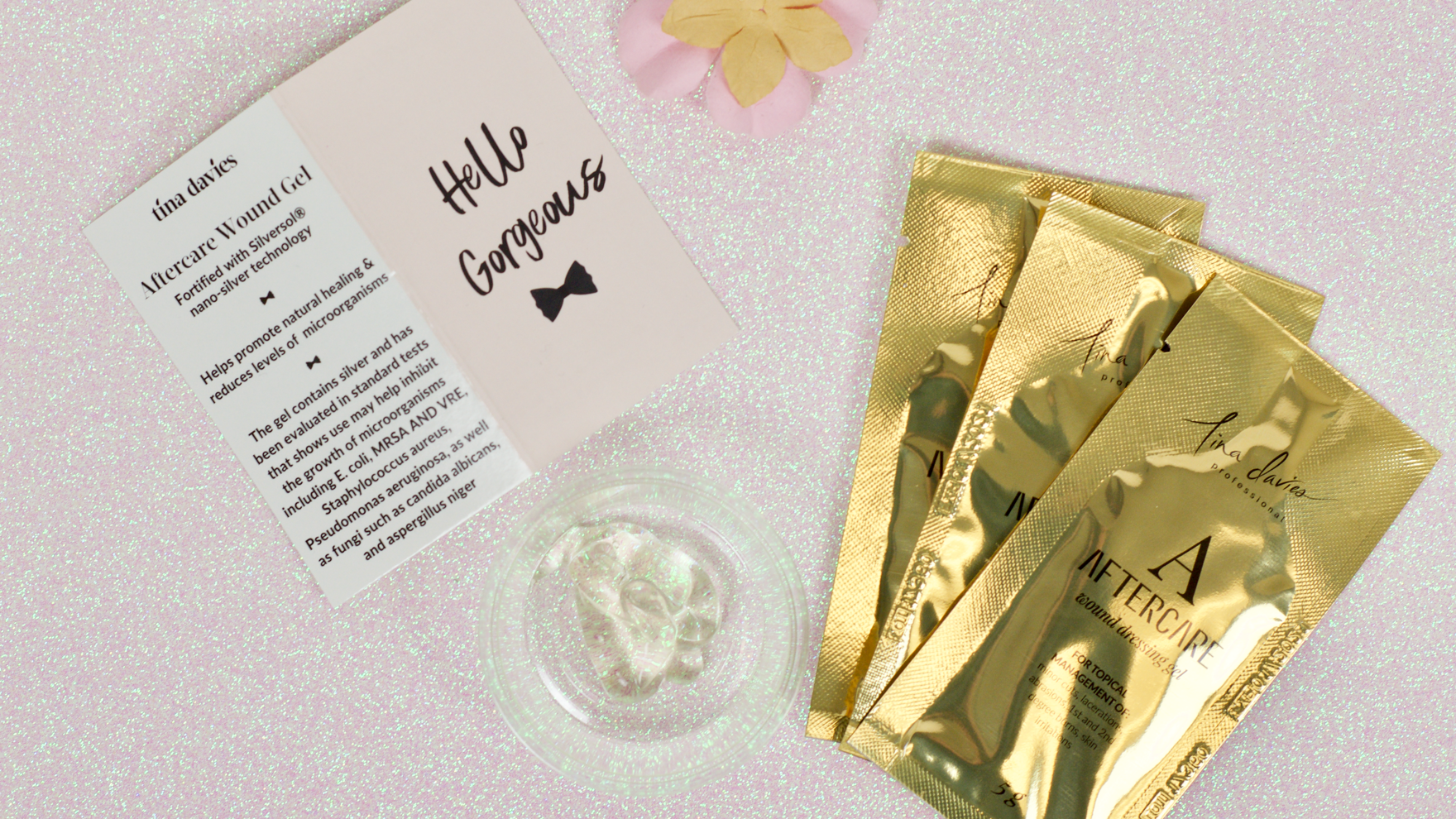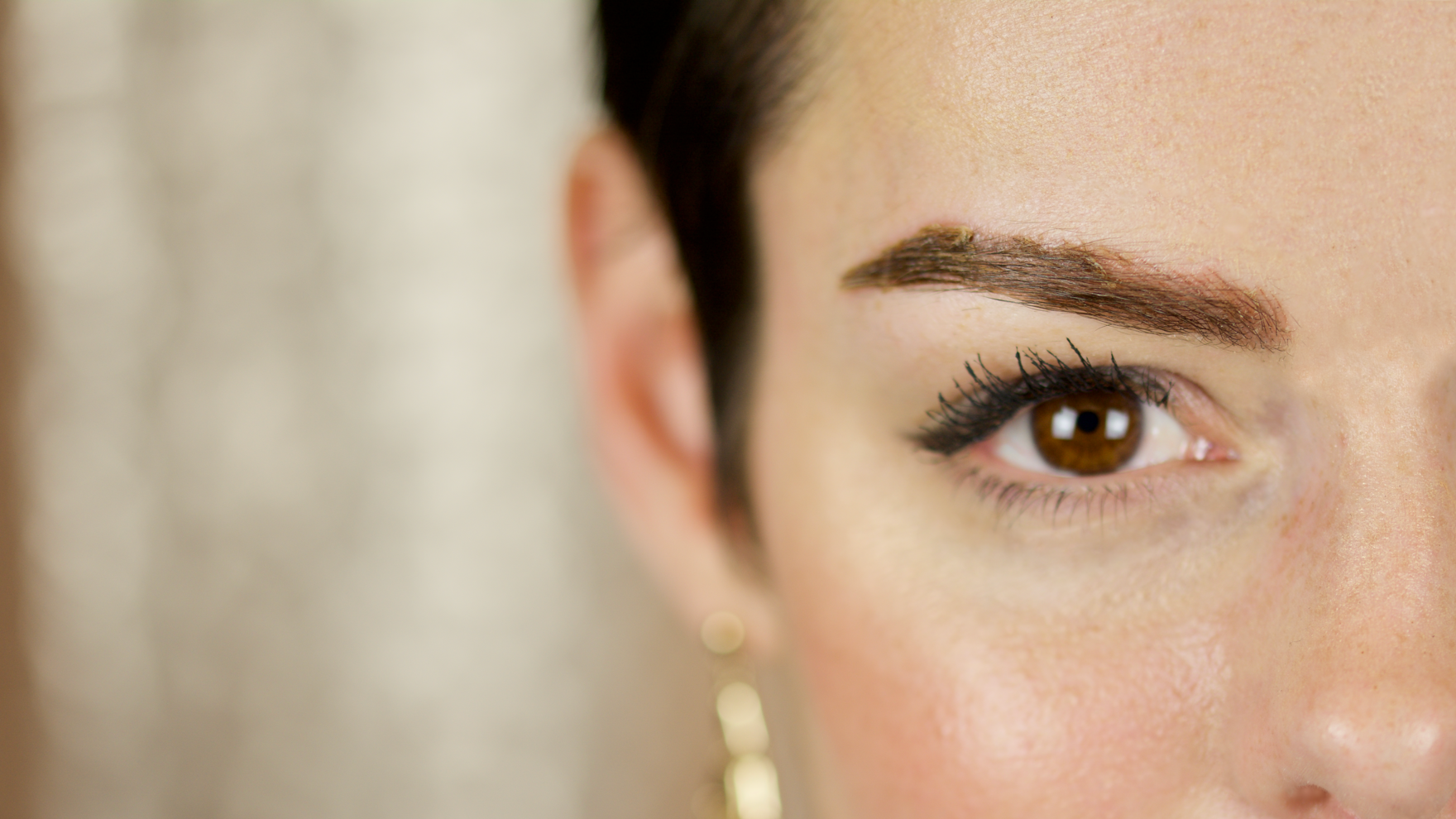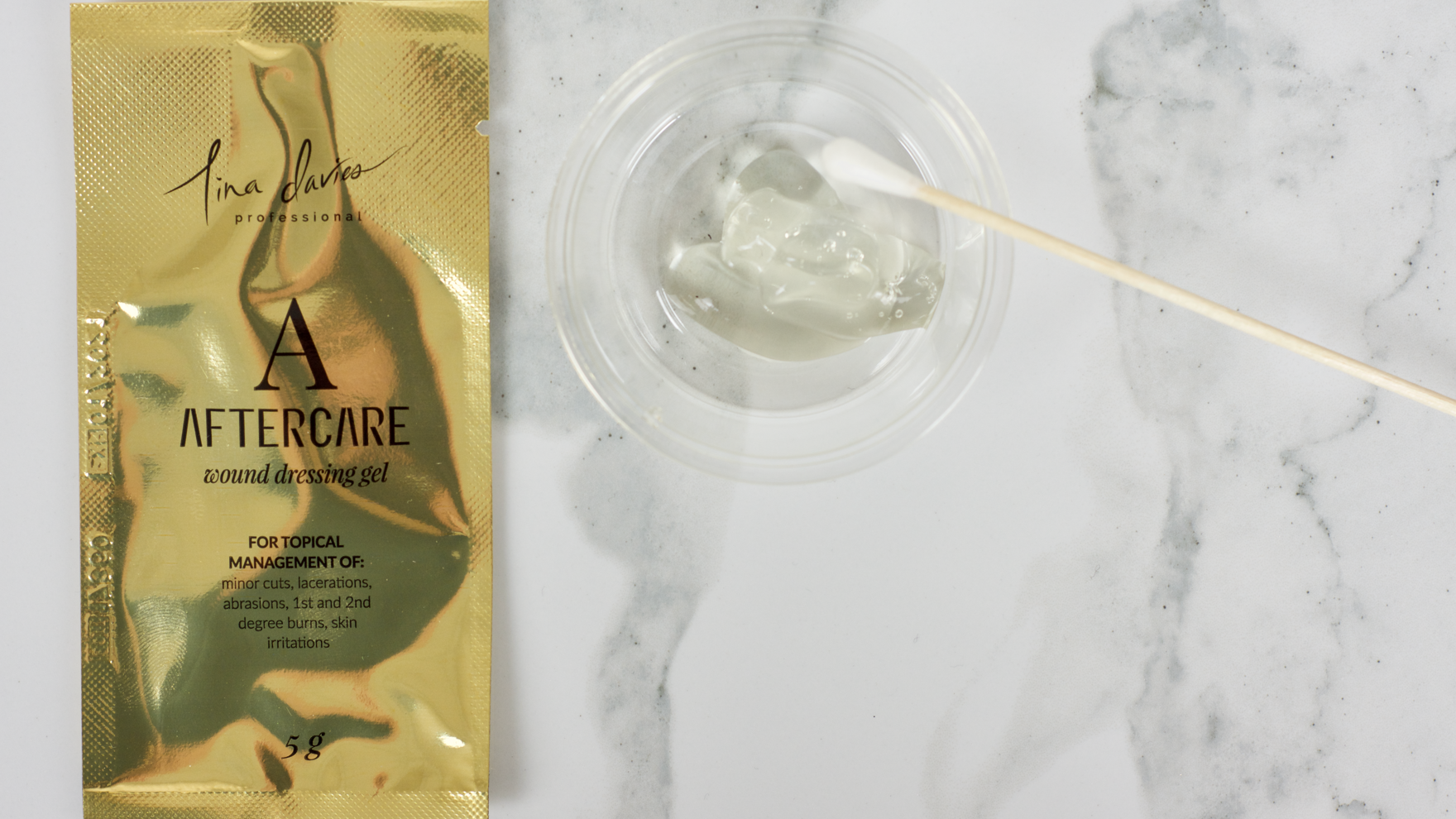
Tina Davies Aftercare Gel
A proper aftercare protocol is a critical step in obtaining the best healed results. After trying so many different aftercare products, I was still searching for a product that would ensure speedy recovery of the skin. It was important to me that that the solution be safe for all skin types, while helping to reduce the risk of infection.

We want our clients to get the best results possible, and we want both artists and clients to have peace of mind during this crucial time. When we get the best results for our clients, we also get the walking endorsements for our own work. Rapid, infection free healing is key to making sure that the client is experiencing optimal results.
The Tina Davies Aftercare gel contains nano-silver technology that not only helps to soothe the skin, but can also cut your client’s healing time in half. Since it targets germs as well as calms the skin, it is a completely revolutionary product. Tina Davies Aftercare Gel is the only FDA approved product on the market that kills germs for up to 4 hours after application
Here are some of the key features of our product that make up the building blocks of great aftercare:
- It’s antibacterial and antimicrobial - This is a high grade formula that kills up to 99.5% of all bacteria and harmful microorganisms that come in contact with the skin, including Staph, MRSA,Vancomycin-resistant enterococci (VRE) bacteria, E.coli, Pseudomonas aeruginosa, candida fungi, and other molds. All claims made by our company are FDA approved.
- It helps to heal FAST - Nano silver particles help to increase both the rate and effectiveness of the healing process. Clinical trials have shown that by applying this aftercare gel twice to three times a day, the treated area can be nearly fully recovered in three days. It creates a protective barrier that keeps germs out of the wound as it heals.
- It soothes and cools the skin - Making the skin soft, this gel is an incredible hydrater that relieves pain and increases comfort.
- It’s non-toxic - The ingredients are 24 PPM Proprietary Silver Solution (purified water, nano-silver at .01 microns), TEA, and Carbomer. It’s an FDA approved formula that is free of parabens and drying agents, such as alcohol. It helps the skin breathe as well as protects it, so clients never have to worry about it suffocating the skin.
- It’s safe to use, even when the packet is opened - Some aftercare ointments can spoil once the product is oxidized, but this product can be used for up to 3 and a half years, even after the packet is opened.
- It has SO many uses - Not only can you use this gel on brows, you can also use it for minor burns and wounds, as aftercare for a body tattoo, as an acne treatment, as an anti-wrinkle treatment, and even as a makeup base!

Why is Tina Davies Aftercare Gel so important for the healing process?
There isn’t enough helpful information out there available to both artists and clients about the potential dangers of infections and the bacteria that can cause them. Staph infections, E coli, MRSA, and VRE, as well as fungi, such as Candida albicans and Aspergillus niger, can not only interfere with the results of your microblading, but can also cause infections that present a lot of problems for the skin.
An infection can look like pimples or scabs around the microbladed area that aren’t healing after two weeks, as well as scabs, bumps, itchiness, blistering, swelling or inflammation, oozing of blood or pus, and a foul smell. An untreated infected area can cause fever and pain, eat away at the tissue, and ultimately result in a hospital visit.
What are the bacterias that commonly cause infection?
Some of the most commonly known bacteria associated with tattoo-related infections are:
Vancomycin-resistant enterococci (VRE) are bacteria that are commonly found in the intestines, in urine, or on the skin. They can cause infections to wounded skin through direct contact or through cross contamination.
E.coli, or Escherichia Coli is typically associated with the bowels, but can can be passed on from milk, fruits and vegetables, meat, and water. It thrives in unsanitary conditions and is easily transmitted.
MRSA, or Methicillin-resistant Staphylococcus aureus, and other Staph infections are contracted by touching an infected person and is resistant to most commonly used antibiotics. The infections associated with it can range from being mild to life threatening.
Candida fungi and other associated fungi are most common in cases such as oral thrush, athlete’s foot, and vaginal yeast infection. It tends to spread in hot and humid conditions, and open wounds are an ideal breeding ground for infections associated with them.
Aside from contracting any of these infections through direct contact, you must also be mindful of cross contamination, a process that occurs when you touch an infected object before touching another, uninfected object. This is a sure way of transmitting a possible infection, and a lot of people in the PMU industry tend to overlook the dangers of it.
There are a lot of warnings out there about microblading gone wrong. Recently, there was a story in the media about a woman who experienced complications after her microblading procedure. Leading by example, you can help educate both potential and existing clients so that they can avoid scenarios like this in their own healing.
For more information on properly identifying and dealing with an infection, take a look at this article from Treat, Cure Fast, a website dedicated to proper healing procedures.
The key to infection is prevention. The easiest method of prevention is cleanliness: clean station, clean tools, and a sterile work environment. A proper aftercare wound gel is the additional assurance that your client needs to walk out of their procedure room with the extra protection they need for a fast, safe heal.
Instructions for use:
- Blot the treated area with a tissue for the first hour to remove the lymph fluid.
- Apply a very thin layer of the product with a cotton swab 3 times a day for 3 days.
- Using the fingertips, gently wash the area with a non-scented soap or cleanser that your skin is already familiar with, morning and night, for 7 days.
- Avoid washcloths and scratching or picking at the tattoo during the healing process.
- Avoid hot tubs, steam rooms, public pools, sweaty exercise, or submerging the tattoo in water for the first 10 days.
- Avoid direct sunlight or tanning beds for 2 weeks after the tattoo.
- Avoid putting makeup on the area for the first week.
- Avoid facials, chemical peels, or microdermabrasion for 4 weeks.
If you’d like more information on proper aftercare procedures, check out our Microblade Prepare and Aftercare blog.
I’m so excited to for all of you to try the Aftercare Gel. Please feel free to reach out and tell us what you think - we’d love to hear from you!




Leave a comment
This site is protected by hCaptcha and the hCaptcha Privacy Policy and Terms of Service apply.